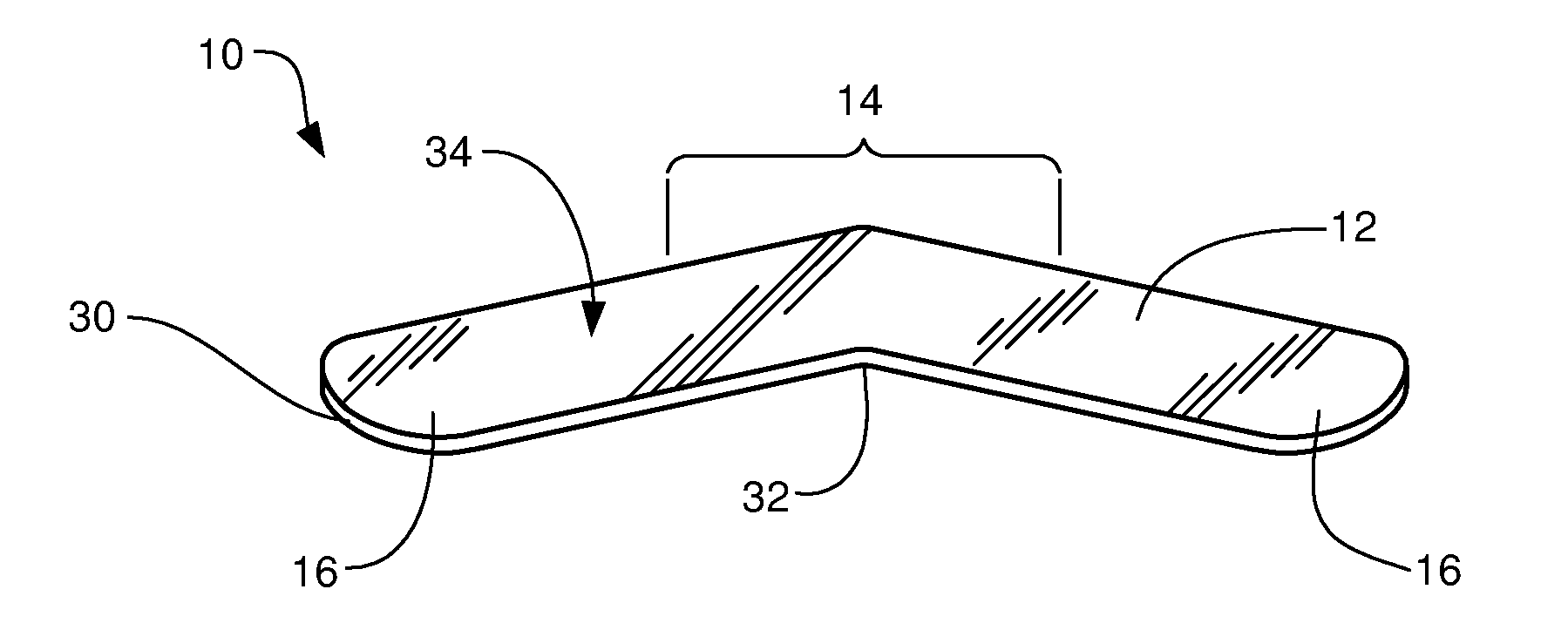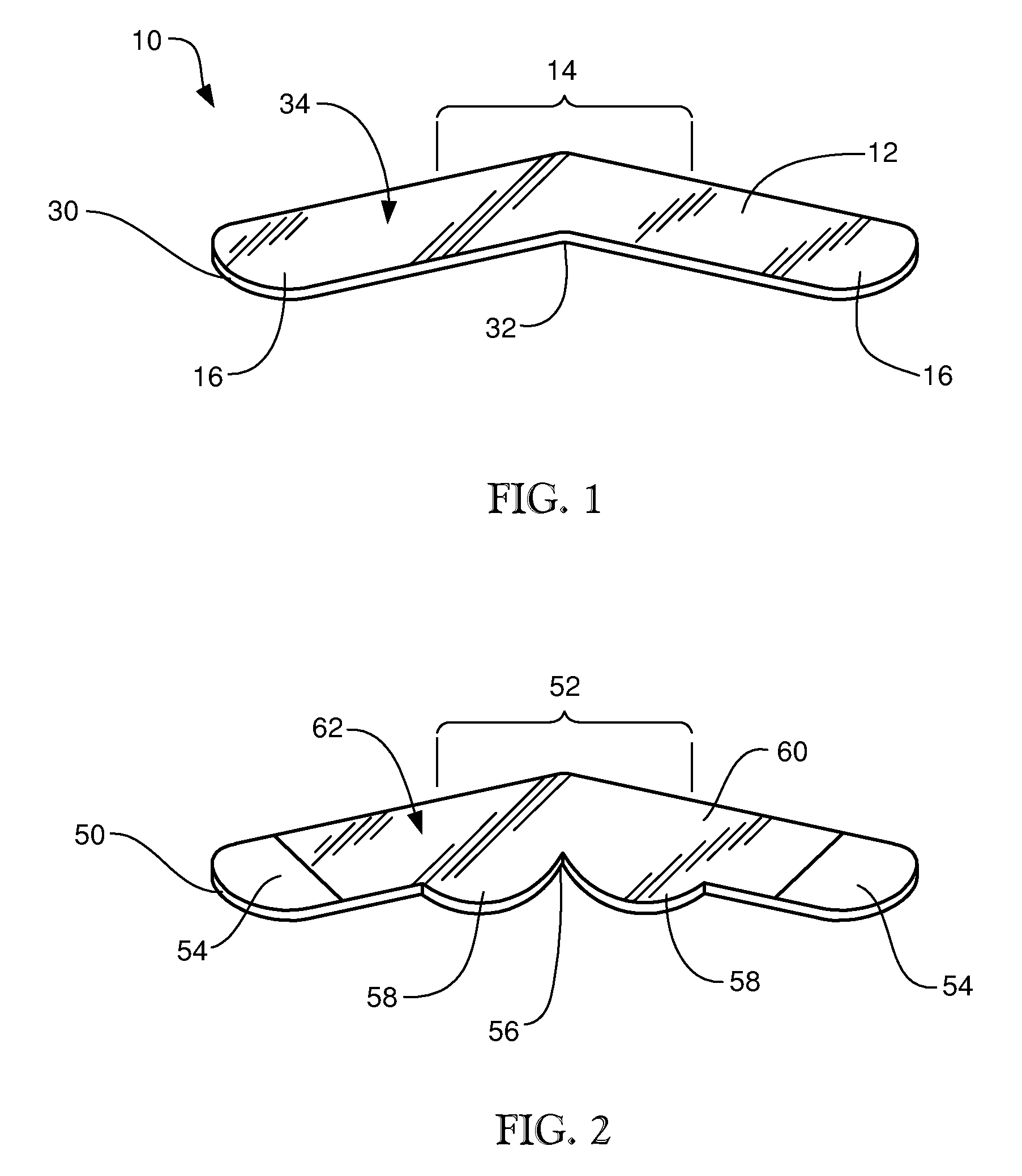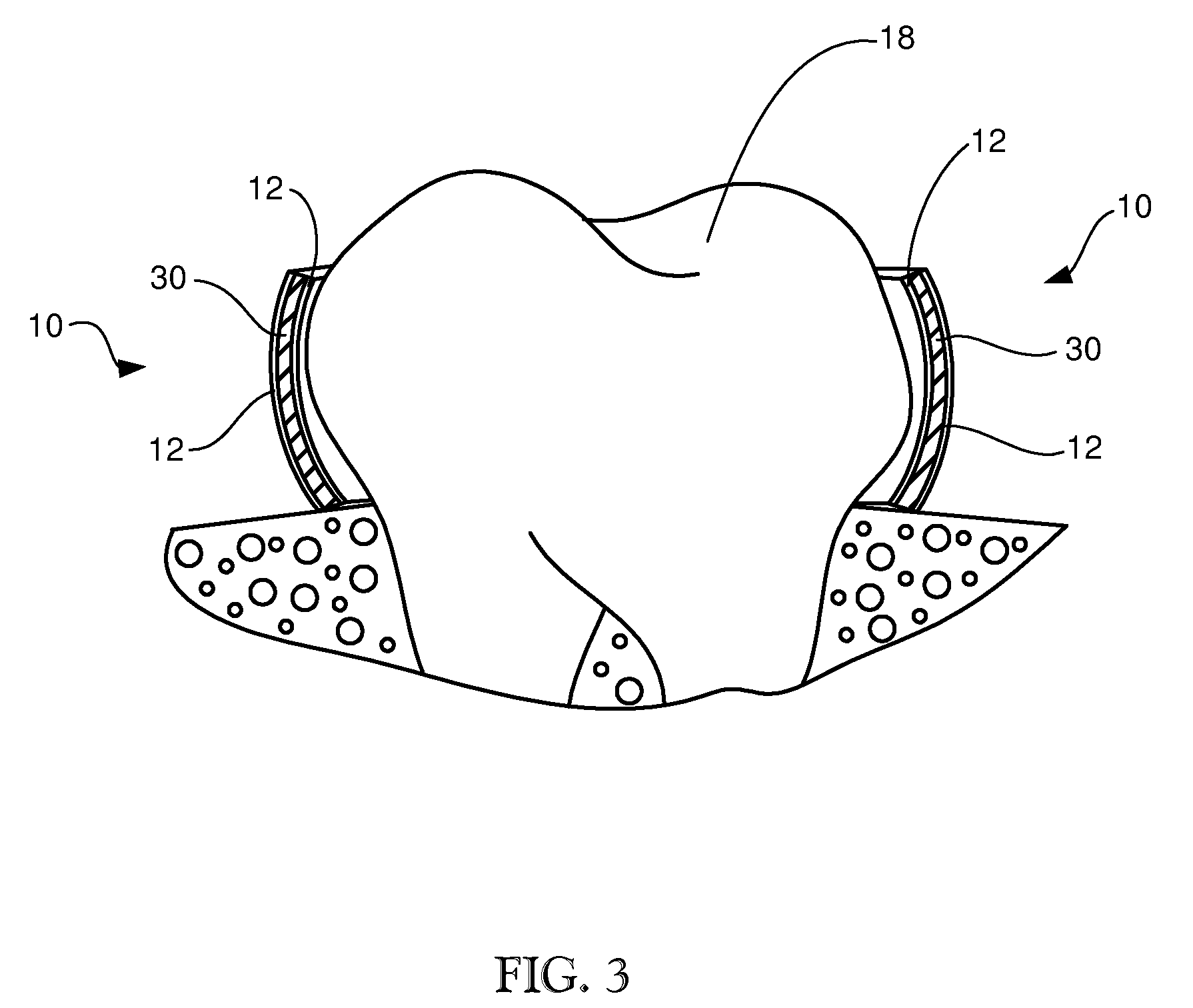Dental matrix band
a technology of matrix band and restoration tooth, applied in the field of dental matrix band, can solve the problems of inability to remove the newly placed filling material, the matrix band may be undesirably attached to the restored tooth, and the general undesirable bonding between the matrix band and the restorative material
- Summary
- Abstract
- Description
- Claims
- Application Information
AI Technical Summary
Benefits of technology
Problems solved by technology
Method used
Image
Examples
Embodiment Construction
[0017]Reference will now be made to exemplary embodiments illustrated in the drawings, and specific language will be used herein to describe the same. It will nevertheless be understood that no limitation of the scope of the invention is thereby intended. Alterations and further modifications of the inventive features illustrated herein, and additional applications of the principles of the inventions as illustrated herein, which would occur to one skilled in the relevant art and having possession of this disclosure, are to be considered within the scope of the invention.
[0018]Shown in FIGS. 1 and 2 are two embodiments of matrix bands configured in accordance with the present disclosure. Referring to FIG. 1, one embodiment of a matrix band 10 in accordance with the present disclosure comprises a generally flat body 30 of flexible material, having a central portion 14 and two arms 16 extending in generally opposite directions. This embodiment is configured in accordance with the well-...
PUM
| Property | Measurement | Unit |
|---|---|---|
| thickness | aaaaa | aaaaa |
| thickness | aaaaa | aaaaa |
| thickness | aaaaa | aaaaa |
Abstract
Description
Claims
Application Information
 Login to View More
Login to View More - R&D
- Intellectual Property
- Life Sciences
- Materials
- Tech Scout
- Unparalleled Data Quality
- Higher Quality Content
- 60% Fewer Hallucinations
Browse by: Latest US Patents, China's latest patents, Technical Efficacy Thesaurus, Application Domain, Technology Topic, Popular Technical Reports.
© 2025 PatSnap. All rights reserved.Legal|Privacy policy|Modern Slavery Act Transparency Statement|Sitemap|About US| Contact US: help@patsnap.com



